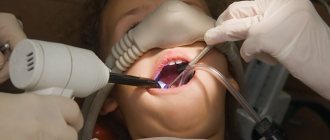Modern man has a big problem - we don’t know how to eat. Adults do not have enough time to eat normally at a calm pace, and in most cases children are not even taught to chew. Many parents specifically feed their babies soft or pureed food. Everyone is afraid that the child will be capricious or choke. Let's figure it out - what is the mistake of this approach and why is chewing so important?
Typically, people literally swallow their food and quickly wash it down with a hot or sweet liquid, and that's the end of the meal. Among the consequences: digestive problems and regular overeating, since the body requires much more energy to digest poorly chewed food.
The process of digesting food begins in the oral cavity. Saliva is secreted in the mouth, which contains enzymes and breaks down easily soluble substances and softens denser ones. The teeth and tongue grind and crush food. By the time the food gets into the stomach, it will be much easier to digest and assimilate it than if you simply swallow the product (otherwise it will ferment, which will negatively affect the functioning of the gastrointestinal tract).
As shown by Chinese and American studies published in The American Journal of Clinical Nutrition, experiment participants consumed 11.9% fewer calories, regardless of their size, their bodies became full faster, they felt less hungry, and they even managed to lose a little weight.
Not united by food
Chewing not only ensures a normal digestive process, but also has a number of other benefits. If you start teaching your baby to chew in time (from 6-7 months), his bite will form. Moreover, as shown by a Belgian study published in the journal J Voice, chewing promotes proper speech development. When a child chews, bites or licks, his lips, tongue, cheeks and jaws work. This develops the same motor skills as when speaking. In practice, it turns out that the process of eating food is the most enjoyable type of articulatory gymnastics.
Pediatrician of the highest category Yulia Viktorovna Andronnikova told us about other functions of chewing:
- Chewing slowly allows you to feel full with less food, as the signal has time to reach the centers regulating hunger and appetite.
- Chewing movements activate areas of the cerebral cortex that are responsible for cognitive abilities. In children, chewing stimulates development. If this process is disrupted, dementia can progress in old age.
- Chewing movements form the facial skeleton, which is very important for proper breathing and blood supply to the central nervous system.
- Not a single cosmetic procedure will help keep you in good shape and improve blood supply to the facial muscles as well as proper (slow) chewing.
How to help a child?
It is worth understanding that these habits do not arise on their own and not because of bad behavior. Comments and reminders that you should not stick your tongue out will not work - you need to work with the root cause of the disorder.
- Restore nasal breathing.
Orthodontists often prescribe consultations with an otolaryngologist, since the dental system and respiratory organs are closely connected. Removal of adenoids, treatment of chronic diseases, normalization of the microclimate at home to reduce the frequency of acute respiratory viral infections, hardening and other restorative procedures - all this can be prescribed by a doctor to achieve remission.
ENT can help restore health for proper tongue function
- Contact an orthodontist.
Only in this order, otherwise the treatment will not be effective. As soon as the child is able to breathe with his mouth closed, you can move on to correcting the position of the teeth and tongue.
For this purpose, children's orthodontic devices have been created:
- Plates.
- Trainers.
- Twin Block device.
- Children's aligners Kinder Smile.
All these devices are removable and act quite gently, guiding teeth during the period of their active growth. Wearing requires parental supervision, but with proper use, problems are solved quite quickly - within a few months.
Only after this can you begin classes with a speech therapist - when the malocclusion and the main manifestations of tongue dysfunction are eliminated, the correction of sound pronunciation will be much more successful.
When and how to teach a child
To prepare your child for chewing, you can make faces, grimace, and perform chewing movements. When your baby “speaks baby,” answer him. The child will repeat after you and actively move his jaws, tongue and lips.
The sooner parents introduce their child to foods of different hardness, the more willing he will be to try new foods. As soon as the child began to make chewing movements, slurping and smacking, he developed an interest in food, and especially when the first teeth appear, you can give pieces of food (soft boiled vegetables, for example, carrots). The optimal age for the first introduction to food is 6-7 months. Children are old enough to accept new food, but still too young to start being capricious and indignant at the table.
Tongue, nose, throat: everything is interconnected
The inside of a child’s nasopharynx is covered with mucous membrane, which should normally perform a protective function: trap viruses, bacteria, dust particles and other allergens. But if the mucous membrane dries out, it becomes too thin and vulnerable.
Therefore, by the way, the child’s room should be cool and fairly humid.
If the house is hot, the air is dry, the mucous membrane of the nasopharynx dries out, and any virus can easily penetrate through the thinned protective barrier. This causes frequent acute respiratory viral infections associated with a runny nose and swelling of the nose.
Due to these diseases, the child’s nasal breathing is impaired, his mouth is constantly open and his tongue is visible. Gradually, the habit of breathing through your mouth in your sleep arises.
Breathing through your mouth during sleep is a very alarming sign
The mouth opens slightly, expanding space for the tongue. And, of course, the child's tongue begins to take up this additional space in and outside the mouth.
This is how tongue dysfunction arises, then it becomes fixed in the child’s habits.
A vicious circle arises: frequent ARVI - stuffy nose - habit of breathing through the mouth - dry mucous membrane - frequent ARVI, and in addition, tongue dysfunction occurs.
All this can lead to the proliferation of lymphoid tissue, and therefore to adenoiditis and tonsillitis, since it is the nose that filters the air, and when breathing through the mouth, allergens and viruses enter directly into the oropharynx. In this case, the blood is not fully saturated with oxygen and sleep at night is disturbed - in the morning the child gets up sleep-deprived, feels drowsy during the day and cannot concentrate on studies.
Please note: when a child sleeps with his mouth open, this is a very alarming symptom. This habit easily passes into adulthood: snoring, apnea and numerous negative consequences from this occur.
Underwater rocks
Up to six months, children have an active expulsion reflex - a natural defense against suffocation. Therefore, at the beginning of “communication” with semi-solid food, the child may choke and spit out the food. There is no need to be scared and abruptly return to purees and ground products! Chewing is a skill and needs to be learned.
If you've introduced semi-solid foods a long time ago and your baby is still choking, give him time. Place food in front of your baby and watch - let him try to put food in his mouth with his hand on his own. Children should be praised and not scolded at the table! Otherwise, food may begin to be associated with violence and lead to an eating disorder.
Links:
- The American Journal of Clinical Nutrition, Volume 94, Issue 3, September 2011, Pages 709–716, https://doi.org/10.3945/ajcn.111.015164
- The American Journal of Clinical Nutrition. Mastication of almonds: effects of lipid bioaccessibility, appetite, andhormone response. Bridget A Cassady. https://ucce.ucdavis.edu/files/datastore/608-11.pdf
- Cell. Nicolas Dutzan. Published: January 10, 2022 DOI: https://doi.org/10.1016/j.immuni.2016.12.010
- Effectiveness of Chewing Technique on the Phonation of Female Speech-Language Pathology Students: A Pilot Study. Meerschman I DOI:10.1016/j.jvoice.2015.06.016
How to teach a child to chew solid food?
Bring the spoon to your mouth, play with the food, twirl the food with your tongue, spit it out, bite it, try to chew it and finally swallow a piece... What children don’t do to cope with adult food, which at first seems so “difficult”! We tell you how to teach your child to chew solid food so that it does not become a family problem. Nutritionist Anastasia Ivanovna Shalunova advises.
— Anastasia Ivanovna, let’s talk about how to teach a child to chew and swallow solid food. Why is age important here?
— It is important not to miss the right moment when chewing skills are most easily formed. The most optimal period is from 6 to 10 months, when introducing complementary foods with pieces. However, the boundaries of the norm are arbitrary, because a child can only eat liquid food even at one and a half years old.
Children begin to chew due to the formation of the physiological and neuropsychological processes of the body - this is individual for each child. And here the influence of cesarean section and natural childbirth is also very important, how the birth process proceeded and how the baby developed from birth.
When to give your baby solids
| 4-5 months | The first chewing movements are observed, the reflex of pushing food out with the tongue disappears. The child’s first solid food—porridge and vegetable purees—helps support these changes. |
| 7-8 months | The child is ready for vegetable, fruit, meat purees with small pieces, chopped fruits and berries. |
| Up to 12 months | Biting and chewing skills are strengthened, lateral movements of the tongue develop, and the child consciously and confidently moves food to the teeth. As the baby approaches one year of age, food pieces become larger. |
How can parents understand that their child is ready to chew solid food?
— Food interest is formed conditionally from 4 to 6 months, when the child pulls the plate, spoon towards himself, asks for food. During this period, complementary feeding begins, gradually moving from homogeneous puree-like dishes to denser ones, with pieces.
The child is ready to chew food if:
- he confidently takes and holds the spoon;
- sits without adult support;
- receives complementary foods for three to four weeks.
From 6 to 10 months, it is easier to teach a baby to eat and chew food in pieces. If the child does not chew, but sucks or licks what was given to him, there is no need to prohibit him - perhaps he is not hungry or he is interested in something else at that moment in time.
If there is no interest in food for up to a year, you may need to work with psychologists, neuropsychologists, and neurologists. Each of them will look at the child’s problem from their own perspective and give recommendations.
— How many teeth are enough to start chewing?
— You can “chew” food without teeth, grinding the pieces with your gums. Some children develop teeth late but are still given solid foods to develop chewing skills. Chewing can stimulate blood circulation and tooth growth.
Spoon pushing reflex
According to the Russian Union of Pediatricians , when a child pushes solid food out of the mouth with the tongue, it is called the “spoon pushing reflex.” This is one of the baby's protective instincts. The baby's body is developing, and the ejection reflex protects it from suffocation or swallowing foreign objects in the first months of life. If something accidentally gets into his mouth, his reflex causes him to push it back out. In addition, the baby's swallowing mechanism is not yet developed enough to cope with solid food. Thanks to this reflex, breast milk or formula is the only thing that gets into his tummy. The reflex does not work when breastfeeding or bottle feeding, but it may work when you offer your baby solid food.
Feeding Basics
The timing of introducing solid foods into a baby's diet is determined individually, so it's worth talking to your baby's pediatrician first. The Union of Pediatricians of Russia advises starting the introduction of complementary foods to children aged 4–6 months. However, sometimes even after the doctor’s permission, the baby continues to push food out of his mouth. This suggests that his spoon-pushing reflex has not yet disappeared. Wait a few days and try again. Gradually the reflex will fade and the baby will be ready to eat solid food.
Introducing your baby to solid foods is the best time to reinforce regular oral care routines for your baby. Wipe your child's gums with clean gauze soaked in boiled water, or remove food particles with a soft toothbrush for children. Even if your baby hasn't started teething yet, regular oral care is important for his health.
At first glance, a child's picky behavior may turn out to be an important stage in his development. The spoon-pushing reflex protects the baby until his body is ready to eat solid food. Observe your baby's behavior to determine when your baby is ready to eat his first solid food, and enjoy the moment together.











